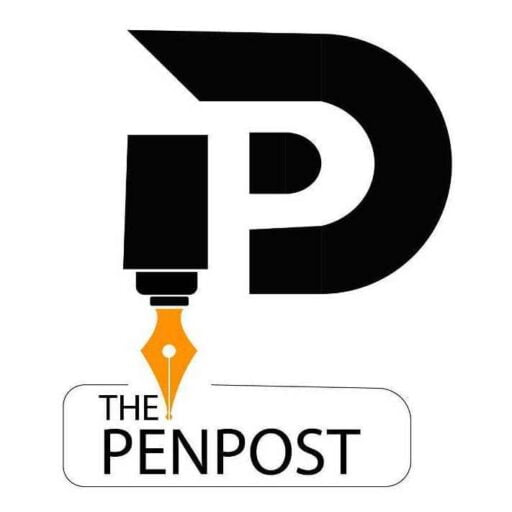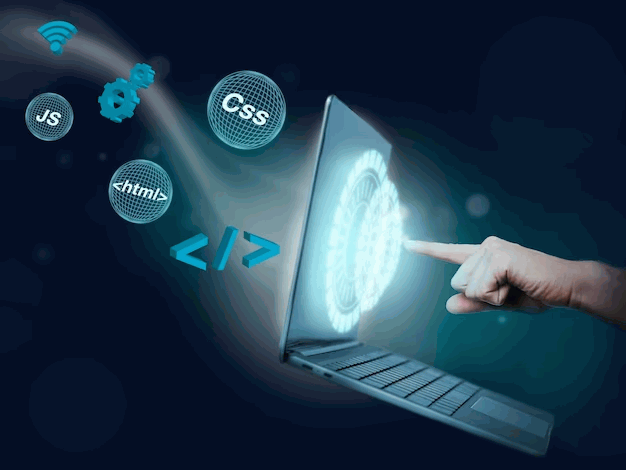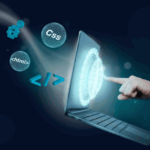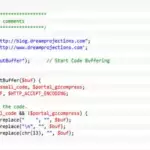Python Programming Language: Python programming language is an open-source, high-level programming language that is widely used for web development, scientific computing, data analysis, artificial intelligence, and automation. With its clear syntax and readability, Python has become one of the most popular programming languages in the world, with a large and active community of developers and users.
- Python’s libraries and frameworks provide a comprehensive set of tools for developers to easily create complex and sophisticated applications.
History of Python Programming Language
- Python Programming Language was first created in the late 1980s by Guido van Rossum, a Dutch programmer. He named it after the British comedy group Monty Python. The first version of Python, Python 0.9.0, was released in February 1991.
- Python Programming Language is also known for its ease of learning, making it an ideal choice for beginners in programming. The language is designed to emphasize code readability, with a simple syntax that is easy to understand. With the support of online resources and communities, anyone can quickly learn and start coding with Python.
- Python’s libraries and frameworks provide a comprehensive set of tools for developers to easily create complex and sophisticated applications.
- Hence the language has grown in popularity over the years, with many companies adopting it for various applications.
Features of Python Programming Language
- Easy to learn: Python has a simple and easy-to-understand syntax that makes it easy for beginners to learn.
- Open-source: Python is an open-source language, meaning it is free to use, distribute, and modify.
- Cross-platform: Python can run on multiple platforms, including Windows, Linux, and macOS.
- Large standard library: Python has a large standard library that provides a wide range of modules and functions, making it easy to perform various tasks.
- High-level: Python is a high-level language, which means that it abstracts away low-level details, making it easier to write and read code.
Python Programming Language Libraries
- NumPy: A library for working with arrays and numerical operations.
- Pandas: A library for working with data frames and data analysis.
- Matplotlib: A library for creating graphs and visualizations.
- Flask: A micro web framework for building web applications.
- Django: A high-level web framework for building complex web applications.
- TensorFlow: A machine learning library for creating and training models.
- Scikit-learn: A library for machine learning and data analysis.
- Requests: A library for working with HTTP requests and APIs.
Python Programming Language Applications:
- Web Development: Python has numerous frameworks for web development, including Flask, Django, Pyramid, and more.
- Machine Learning: Python is a popular choice for machine learning, with libraries like TensorFlow and PyTorch.
- Data Scientist: A data scientist uses Python libraries like Pandas and NumPy to analyze and visualize data.
- Machine Learning Engineer: A machine learning engineer uses Python libraries like TensorFlow and Scikit-learn to build and train machine learning models.
- Web Developer: A web developer uses Python frameworks like Flask and Django to build web applications.
- Software Engineer: A software engineer uses Python to build and maintain software applications.
- DevOps Engineer: A DevOps engineer uses Python to automate infrastructure tasks and build deployment pipelines.
- Data Engineer: A data engineer uses Python to build data pipelines and ETL processes.
- Community support: Python has a large and active community of developers and users who regularly contribute to its development and offer support through various online forums and communities.
- Object-oriented programming: Python supports object-oriented programming (OOP), which allows developers to write reusable and modular code.
- Interactive mode: Python offers an interactive mode, which allows developers to execute code interactively and get immediate feedback, making it an excellent language for prototyping and experimentation.
- Cross-platform compatibility: Python is a cross-platform language, which can run on various operating systems, including Windows, Linux, and macOS.
- Scalability: Python is highly scalable and can handle large-scale projects with ease, making it a popular choice for enterprise-level applications.
- Memory management: Python has built-in memory management, which automatically manages memory allocation and deallocation, making it easier for developers to focus on writing code.
- Code readability: Python has a clean and readable syntax, which makes it easy to understand and maintain code, even for large-scale projects.
- Django: Django is a high-level Python web framework that allows developers to build web applications quickly and efficiently, making it a popular choice for web development.
- Flask: Flask is a lightweight Python web framework that offers flexibility and scalability, making it a popular choice for building small to medium-sized web applications.
- SciPy: SciPy is a Python library that offers a range of tools for scientific computing, including optimization, linear algebra, and signal processing.
- NumPy: NumPy is a Python library that offers tools for working with arrays and matrices, making it a popular choice for scientific computing and data analysis.
- Pandas: Pandas is a Python library that offers data analysis tools, including data manipulation, data cleaning, and data visualization.
- Matplotlib: Matplotlib is a Python library that offers data visualization tools, including line charts, scatter plots, and bar charts.
- Jupyter Notebook: Jupyter Notebook is a web-based interactive computing environment that allows developers to create and share documents that contain live code, equations, and visualizations.
- PyCharm: PyCharm is an integrated development environment (IDE) that offers a range of tools for Python development, including debugging, code completion, and refactoring.
- Unit testing: Python offers built-in support for unit testing, making it easy for developers to test their code and ensure it works as expected.
- Machine learning: Python offers a range of libraries and frameworks for machine learning, including sci-kit-learn, TensorFlow, and Keras.
- Debugging in Python: Debugging is an essential part of programming, and Python provides several tools to help you debug your code. The most common way to debug code is to use the print() statement to print out the values of variables or the execution path of your code.
Advantages of Python
Python has several advantages that make it a popular choice for programming, including:
- Cross-platform: Python runs on multiple platforms, including Windows, macOS, Linux, and Unix.
- High-level Language: Python is a high-level language, which means that it abstracts away many of the low-level details of programming. This makes writing code easier and reduces the time and effort needed to develop a program.
- Open Source: Python is an open-source language, meaning it is free to use and distribute.
Disadvantages of Python Programming Language
- Tasks: Python is not suitable for memory-intensive tasks like video editing or 3D rendering.
- Design Restrictions: Database Access Layers: Python is not as good as Java in database access layers.
In summary, Python Programming Language is a powerful and versatile programming language that is widely used across a range of applications. Its ease of learning, readability, and comprehensive set of libraries make it a top choice for developers of all levels.
In Python Multiline Comment, It can be achieved using triple quotes (""" or '''). Unlike some other programming languages, Python doesn’t have a specific syntax for multiline comments like /* */ in C or Java. Instead, multiline strings enclosed in triple quotes are often used as a workaround for creating multiline comments.
While Python doesn’t treat these multiline strings as comments in the traditional sense (since they are valid string literals), they are commonly used to provide multiline comments for documentation purposes or temporarily disable blocks of code.
Python Programming Language Frequently Asked Questions:
Yes, Python Programming Language is considered one of the easiest programming languages for beginners to learn. Its simple syntax and readability make it easy to understand and write code.
Python supports several data types, including integers, floats, complex numbers, strings, booleans, lists, tuples, sets, and dictionaries.
A dictionary is an unordered collection of key-value pairs in Python Programming Language. Each key is unique and maps to a value.
The Python interpreter is a program that reads and executes Python code. It is responsible for interpreting and executing Python scripts.
pip is a package manager for Python that allows you to install and manage Python packages and dependencies.
In Python, a module is a file that contains Python definitions and statements. The file name is the module name with the suffix .py. Is Python easy to learn for beginners?
What are the data types in Python?
What is a dictionary in Python?
What is a Python interpreter?
What is a pip in Python?
What is a module in Python?






Thank you much helping to learn basic to advanced Python code.
Thanks for sharing the python programming language from basic to advanced. Really appreciate the The Pen Post efforts.